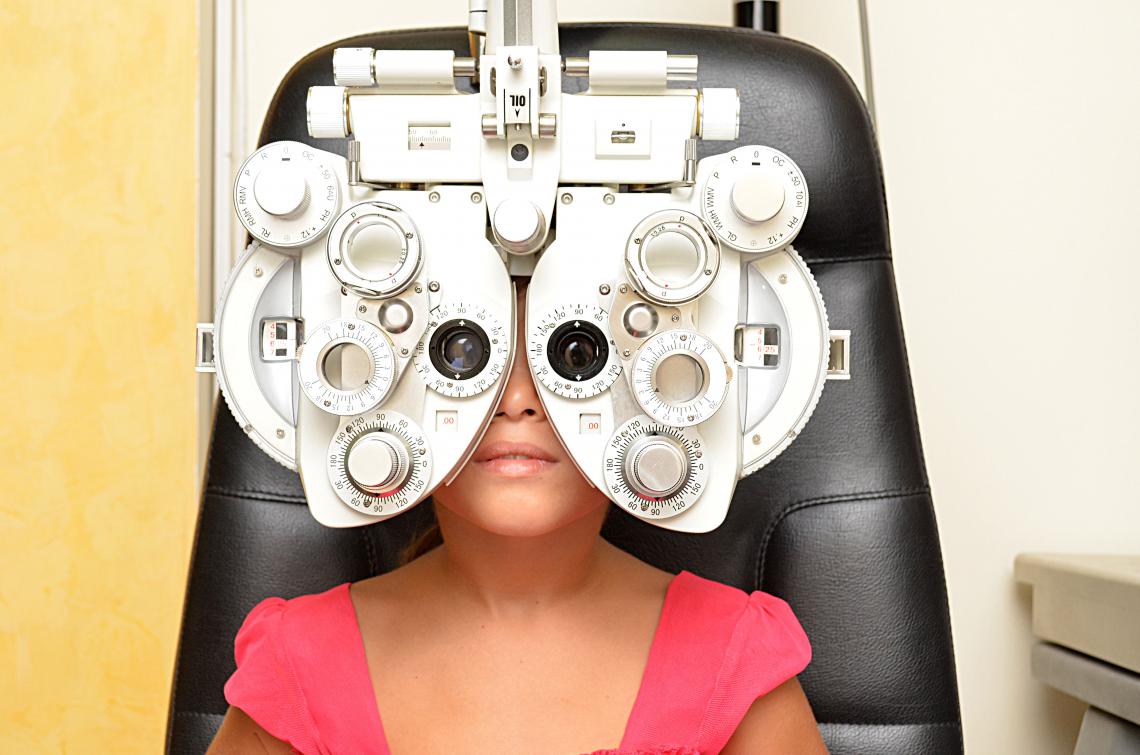Checking Out the current Technical Innovations in Optometry and What They Mean for Optometrists
In the ever-evolving area of optometry, recent technological developments are improving just how professionals approach eye care. From the precision of Optical Coherence Tomography to the nuanced understandings offered by AI-driven diagnostic devices, these technologies are setting brand-new requirements in person analysis and therapy. Teleoptometry is positioned to redefine availability, making sure that know-how transcends geographical restrictions. As these advancements permeate the technique, optometrists are faced with the obstacle of embracing these tools to boost client results. The concern remains: exactly how will these technological changes redefine the functions and responsibilities within the occupation?
Advancements in Diagnostic Devices
Advancing the area of optometry, advancements in diagnostic devices have changed the way eye care experts analyze and detect aesthetic impairments and eye problems. The previous decade has actually observed substantial technological advancements, making it possible for more comprehensive and exact assessments.
An additional secret advancement is the intro of innovative corneal topography systems, which map the surface curvature of the cornea with precision. These devices are specifically useful for suitable contact lenses and detecting corneal disorders. Additionally, digital retinal imaging has transformed traditional ophthalmoscopy, offering detailed, scenic sights of the retina that assist in detailed visual exams.
The development of wavefront aberrometry has actually also been important, making it possible for the evaluation of refractive errors with unequaled precision (Optometrist Chino). This modern technology assists in personalizing corrective lenses and enhancing medical end results for refractive surgeries. Collectively, these analysis innovations empower eye doctors to deliver premium client care, making sure very early treatment and tailored treatment techniques, ultimately improving visual health outcomes
AI in Patient Management
Building on the structure of advanced analysis tools, the unification of artificial intelligence (AI) in person monitoring represents a transformative leap for optometry. AI systems are significantly utilized to boost effectiveness, precision, and personalization in patient treatment.
Moreover, AI-driven systems facilitate structured patient interactions and management processes. Automated organizing, online consultations, and customized follow-up strategies not only enhance patient fulfillment but likewise maximize time administration for experts. These systems can triage clients based upon the necessity of their conditions, making certain that those in vital demand receive timely focus.
Furthermore, AI boosts decision-making by providing optometrists with evidence-based suggestions and treatment pathways. By integrating data from digital health records, AI tools use understandings that inform scientific choices, minimizing the risk of errors and improving client end results. As AI remains to advance, its role in patient administration will likely broaden, reshaping the landscape of optometric treatment.
Advancements in Retinal Imaging
In the realm of optometry, retinal imaging has witnessed impressive technical improvements that are improving diagnostic capacities and individual care. Developments such as Optical Coherence Tomography (OCT) and fundus digital photography have transformed how eye doctors evaluate the retina and envision.
Enhanced imaging techniques like OCT angiography are further refining diagnostic accuracy. Optometrist Chino. Such improvements facilitate the identification of minute retinal modifications that could signify illness progression.
Additionally, innovations in synthetic intelligence are boosting retinal imaging by enabling automatic analysis of big datasets. These systems aid optometrists in determining patterns click over here a sign of pathology, thereby improving analysis precision and performance. Collectively, these developments are changing retinal imaging right into a keystone of modern eye care, enhancing results and increasing healing possibilities.
Teleoptometry's Growing Function
Teleoptometry is significantly coming to be a vital part of eye treatment, driven by developments in digital interaction and analysis devices. This is specifically helpful in underserved Opticore Optometry and rural areas where access to specialized eye treatment is typically minimal.
The assimilation of man-made knowledge (AI) more enhances teleoptometry, enabling the evaluation of aesthetic information and helping in the discovery of eye conditions such as glaucoma and diabetic retinopathy. AI-powered formulas can quickly interpret complicated imaging data, offering eye doctors with valuable insights that reinforce scientific decision-making.
In addition, teleoptometry supports connection of care via seamless assimilation with digital health documents (EHRs), allowing eye doctors to keep comprehensive client backgrounds. When view publisher site consulting with various practitioners., this makes certain that individuals get tailored and consistent care even.
In spite of these advantages, obstacles stay, consisting of ensuring data safety and security and managing person assumptions. Teleoptometry represents a considerable stride towards more obtainable, efficient, and patient-centered eye care. As modern technology evolves, its role is positioned to broaden further.

Future Patterns in Eye Care
A myriad of ingenious fads is established to reshape the future of eye treatment, driven by technological advancements and the advancing needs of clients. One substantial pattern is the assimilation of expert system (AI) in diagnostics, which guarantees to boost the accuracy and efficiency of eye assessments. AI formulas can evaluate large quantities of information from retinal images, possibly spotting conditions like diabetic person retinopathy and glaucoma earlier than standard techniques.
Additionally, personalized medicine is obtaining grip in optometry, with hereditary screening informing customized treatment plans. This method aims to optimize individual end results by customizing treatments to specific genetic accounts. Wearable innovation, such as wise call lenses, is likewise on the horizon, using real-time surveillance of intraocular pressure or glucose degrees, hence supplying continual insights into eye and systemic health and wellness.
The adoption of augmented truth (AR) and digital truth (VIRTUAL REALITY) in training and individual education and learning is another emerging trend. These technologies provide immersive experiences that can boost understanding and abilities both for individuals and optometrists. As these patterns progress, eye doctors need to stay abreast of technical innovations to offer innovative care, making certain enhanced patient outcomes and fulfillment in the vibrant landscape of eye care.
Conclusion

Jointly, these analysis developments encourage eye doctors to supply exceptional individual care, making certain early intervention and tailored therapy methods, inevitably enhancing aesthetic health end results.

As these innovations continue to progress, optometrists should adapt and integrate them into technique, inevitably optimizing process efficiency and elevating the standard of eye care supplied to individuals.